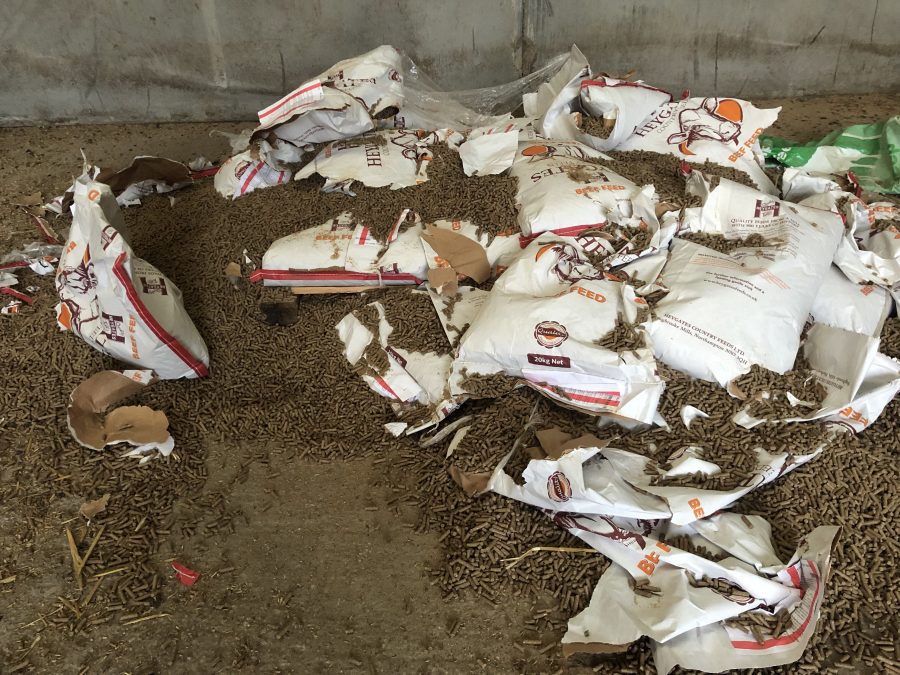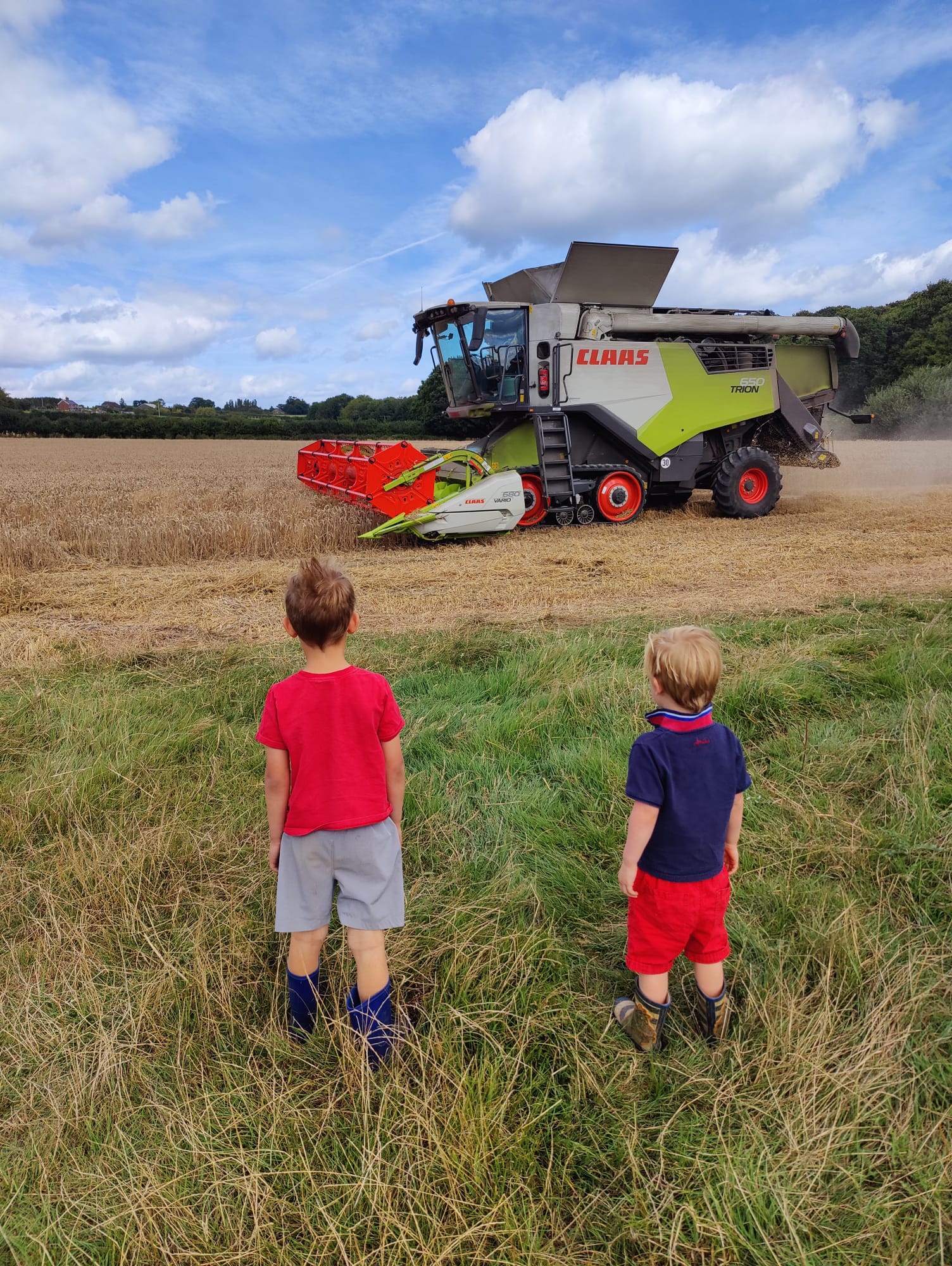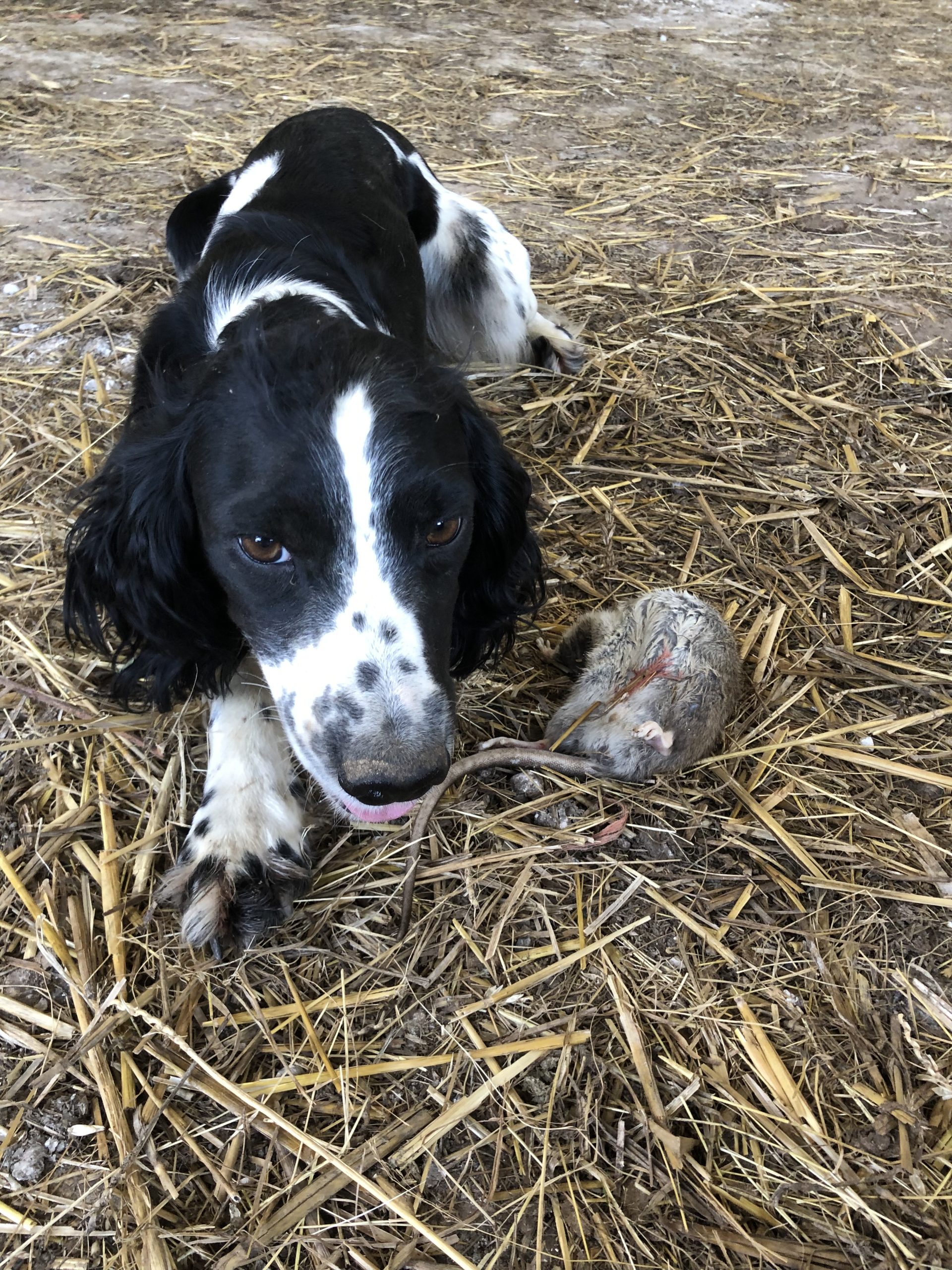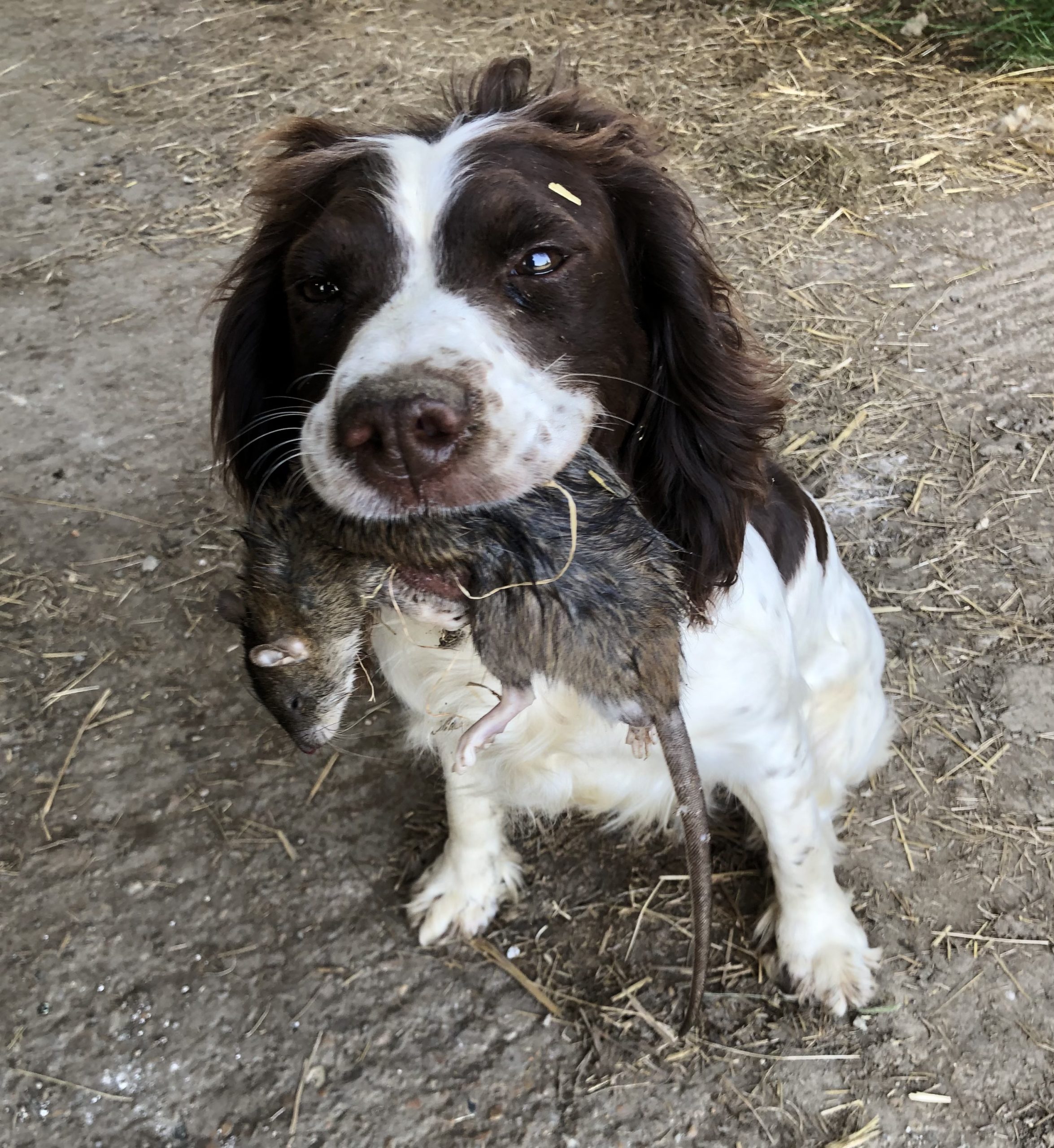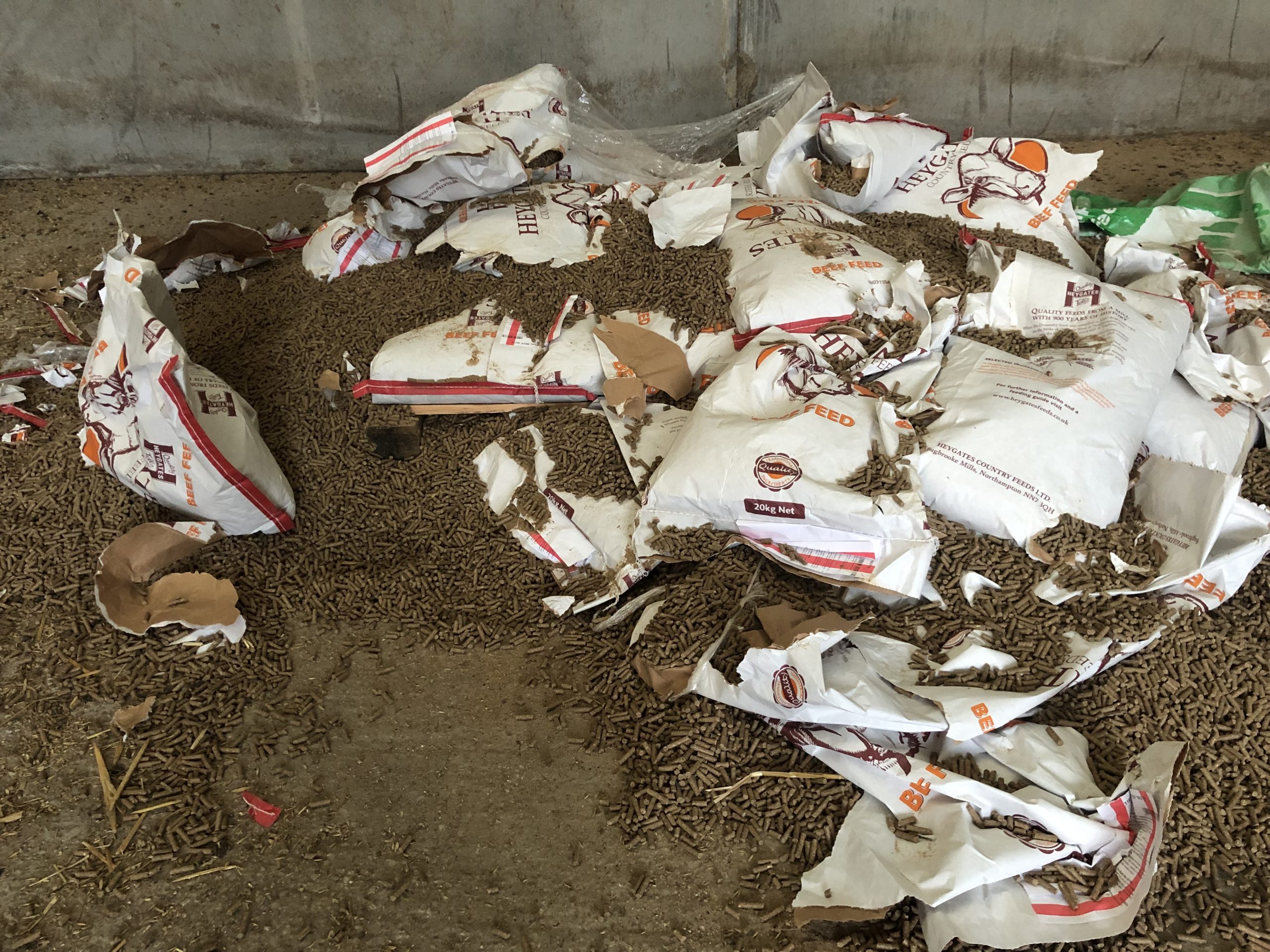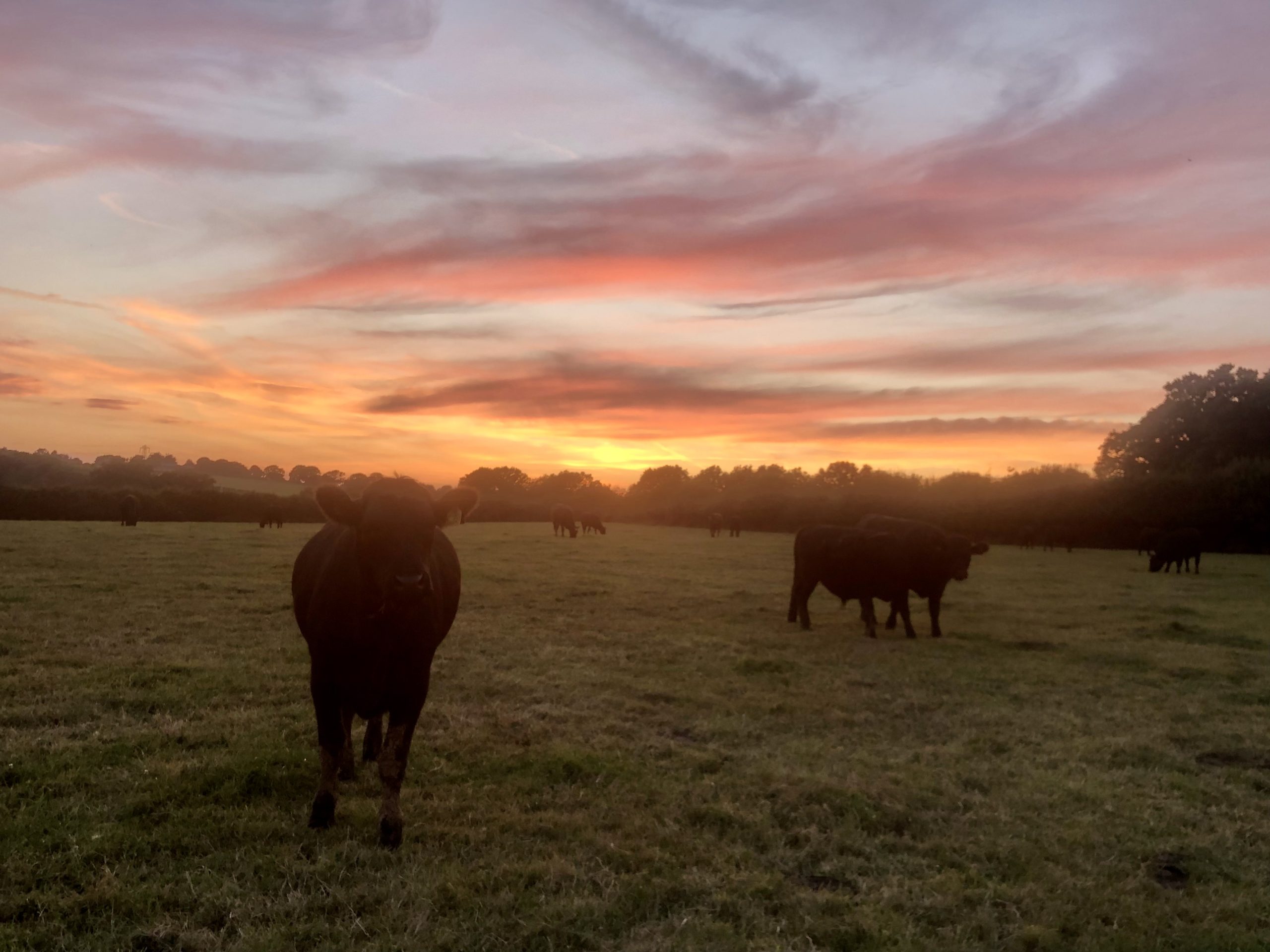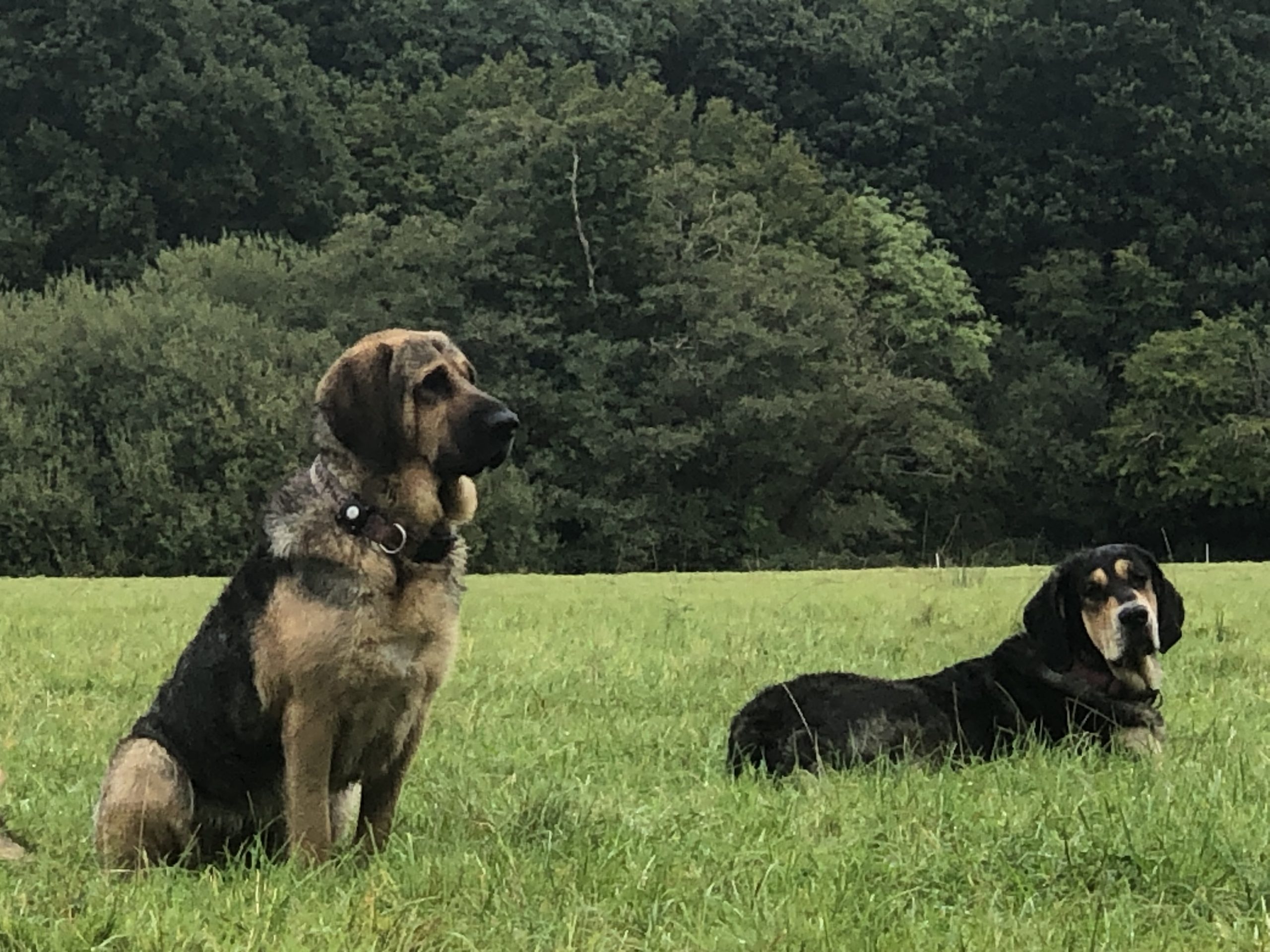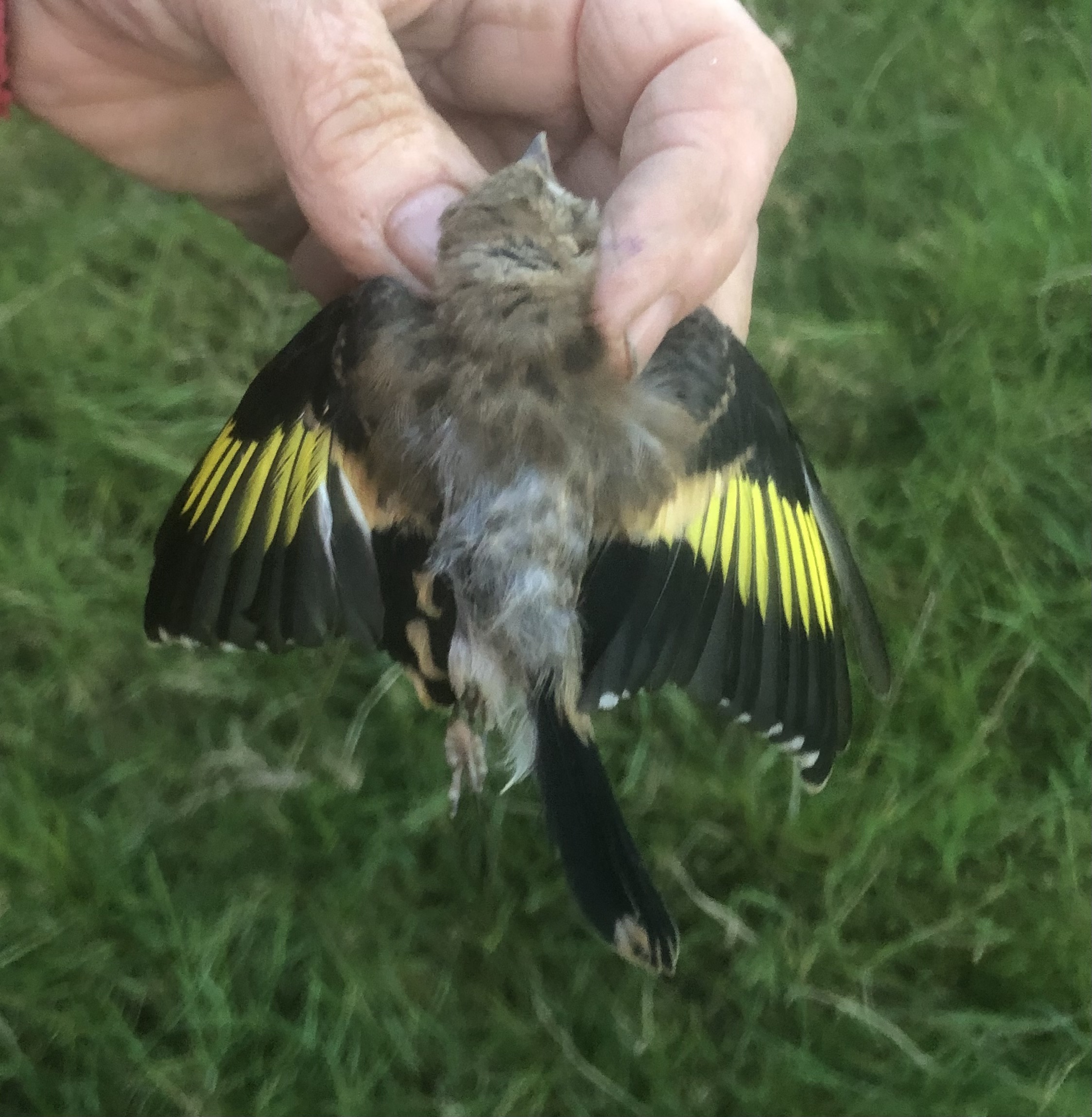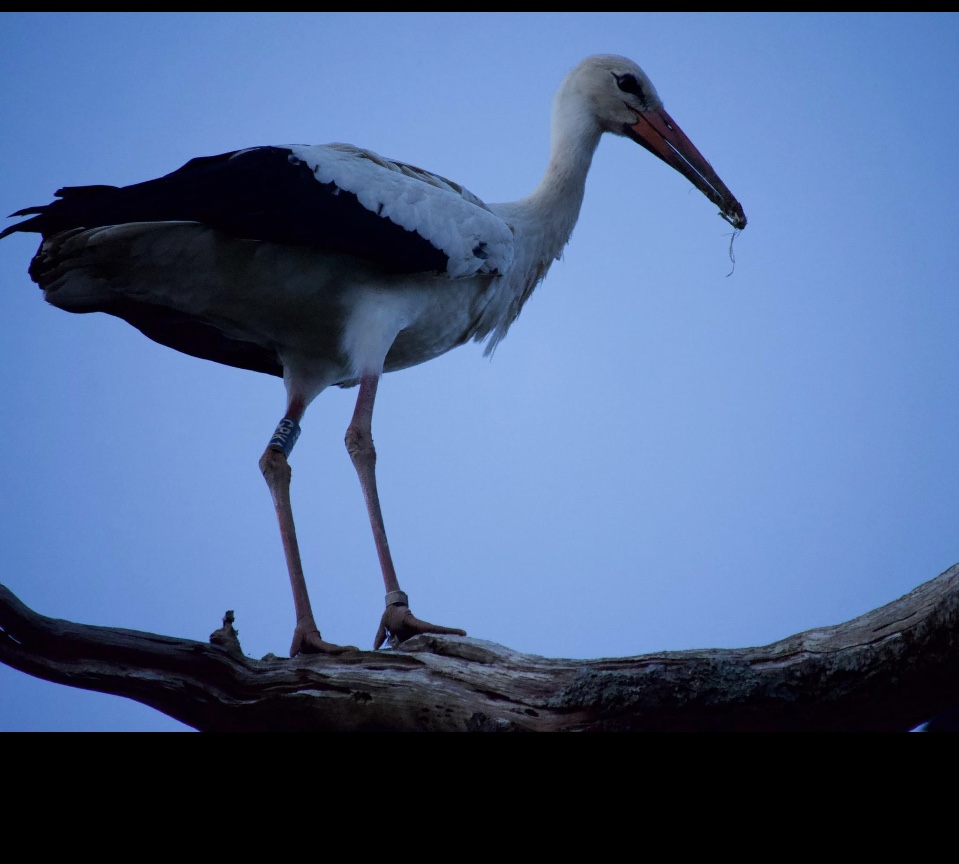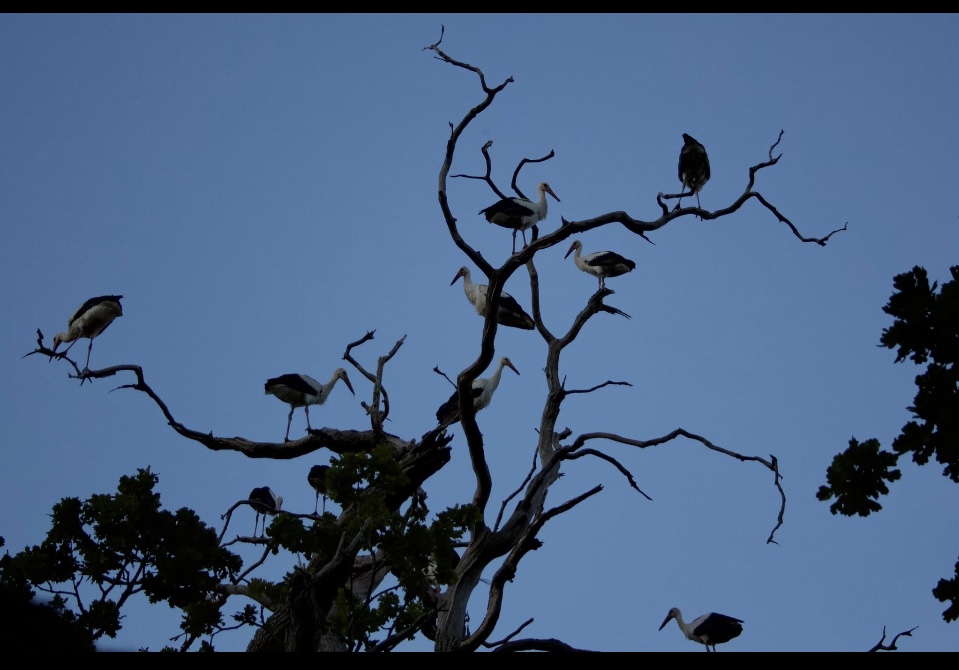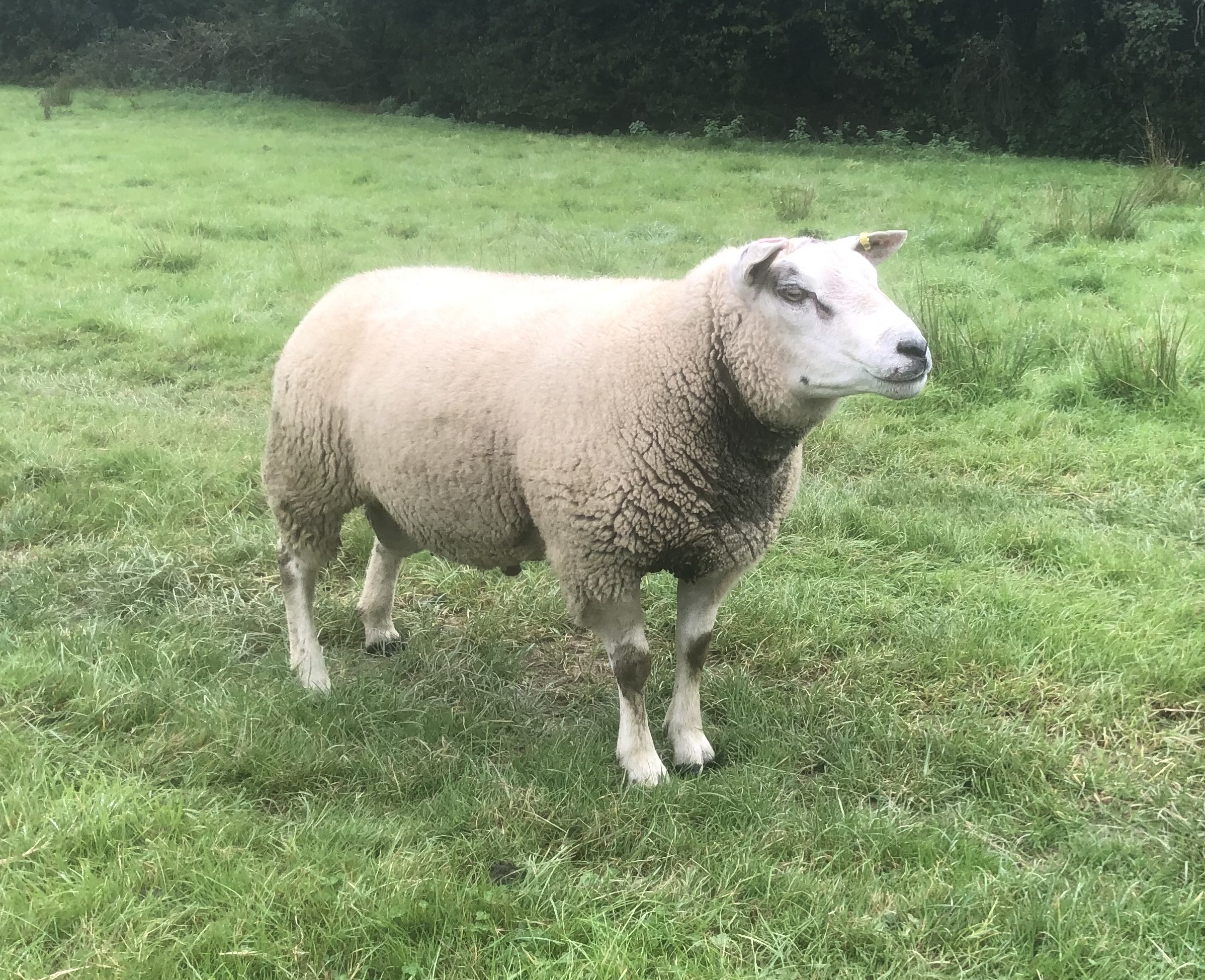Climate change and economic decline certainly isn’t having a detrimental effect on the booming rat population. Controlling these vermin is a pastime that our dogs wholeheartedly embrace. Their enthusiasm for delivering this task knows no bounds. I literally couldn’t believe the devastation they achieved in the 10 minutes maximum it took to drink a cup of tea.
We’d taken delivery of a pallet loaded with beef nuts, 50x 20kg paper sacks with plastic wrap surrounding the outside. I can only assume that a rat ran under this pallet, closely pursued by four dogs intent on catching it.
The result was carnage, a mountain of nuts, paper, shredded pallet and plastic; there were only three bags left intact. The dogs were so pleased with themselves – me, less so. It took much shovelling and sorting to put right, to the extent that restoring our spirits required whisky. If anyone has a redundant vermin-proof bulk bin for sale, I’m interested.
We put some of the loose nuts into some plastic dustbins. I was astounded as the rats simply ate a hole through the lid to access the bin. When the bin was nearly empty, however, they couldn’t seem to jump out, which I found intriguing as I’ve witnessed them scale electric leads and the chain operating the roller doors, climbing to dizzy heights.
These dustbins have proved to be a very efficient way of catching multiple rats, unlike the fancy cage trap I purchased which to date has only once been successful. I’m not a fan of using bait, as I’d worry about unwanted consequences.
Grey squirrels have also flourished this year; destructive creatures damaging trees by stripping bark in woodland and also impacting nesting birds. I was sad to discover a dead fledgling laying on the ground close to a hedge, with beautiful yellow markings on its wings. I took a picture for identification purposes; it turned out to be a goldfinch.
One day we found a white stork strutting among our cattle, but unfortunately it was camera shy. There were several other sightings locally, so I wasn’t imagining it, I believe there were some released at Knepp in early August as part of a white stork project.
We’ve recently encountered two enormous, powerful dogs, unwelcome visitors to the farm. The timing of their arrival couldn’t have been worse. I’d been pleased with my lamb’s growth post-weaning, and faecal egg counts looked good, so I was shocked by how quickly haemonchus worms hit. Initially I thought the problem was due to moving onto a clover ley, but after checking the eyes for signs of anaemia, I realised my error. I rushed to get appropriate wormer, setting up the sheep handling system nearby, to reduce stress.
It was then that we spotted we had company. Thank goodness for WhatsApp, where the community Farmwatch group had reported loose dogs worrying sheep. Another person posted that someone was missing dogs and was out looking for them. We tracked down a number, which went to answerphone. Meanwhile the exhausted-looking dogs lounged in the field with only an electric fence separating them from our sheep. Other half went in search of the owner, leaving me to keep watch; the dogs were pretty edgy about my presence.
Eventually one came up to me and I slipped a piece of string through its collar. It immediately pulled away. Its power was awesome, a precarious situation as I was unsure of the dog’s temperament and yet I needed to protect our lambs. The dogs’ owner later told us they’d escaped from a compound overnight. Their mother had been rescued from abroad (unknown breeding but included Alsatian), they had then mated her to a bloodhound and these two were the offspring.
When people move to country locations, they often feel the need to own large guard dogs which, due to their overwhelming strength, they struggle to control. Sadly, it’s often country folk who bear the consequences of these situations. We were lucky; no animal or human was harmed, but it did mean we lost two hours. We finished worming the lambs using the light on my phone.
The trade for sheep in the form of culls, lambs and stores seems to be holding up well, and grass continues to grow; long may it last. Our thoughts turn to preparation for next season’s crop, I’ve started feeding the rams and decided to replace Mr Bump, our Suffolk x Texel ram. I don’t appreciate his bumps and I’d like to improve on his conformation and so we ventured to Romney Marsh and purchased a Beltex x Charolais ram from Colin Balcomb. Hopefully this ram will at least know what a dyke is and will adapt well to the Pevensey levels.
Colin first showed us around his impressive Romney flock, explaining that the bloodline had been started by his grandfather. Romneys are relatively large, producing a heavy, long-fibre fleece and flavoursome meat. Their characteristics include calm disposition, good mothering skills and tolerance to harsh wet conditions, with a resistance to foot rot and parasites. Romneys have been exported all over the world but right now appear to be less fashionable. I hope they regain their popularity. Due to their mild nature, Romneys make good starters. Grandkids, how about it?
Grandchildren numbers are increasing. Congratulations go to Nigel and Hannah on the birth of their son, Wilf August Akehurst, born on 30 August. It’s delightful to enjoy these little ones around, introducing them to farming life and then handing them back into parental care.
I won’t divulge how long it took me to shear one lamb that got shoulder strike when Clik cover ran out. Well done to Ed Gingell for his epic achievement, shearing 775 lambs in a nine-hour run, and to Jake Prodger for shearing 451 lambs in eight hours. Of course, I think you’re both slightly crazy, but anyone who keeps sheep probably falls into this category.
Colder weather is rarely on my wish list; Here’s hoping bluetongue is soon curtailed (this column was written prior to bluetongue restrictions being imposed in Kent and East Sussex).
- Grandsons watching harvester in action
- Having a sneaky summer drink
- Nigel and Hannah’s son, Wilf August Akehurst, born 30/08/24
- Floss guarding her catch
- Tilley wants me to accept her gift
- Devastation in minutes!
- Colourful sky, late lookering
- Unwelcome visitors to the farms
- Such a vibrant yellow on the gold finch fledgling
- White storks roosting locally, photographed by Jay Ashworth
- White storks roosting locally, photographed by Jay Ashworth
- New addition ram, Beltex x Charolais
For more like this, sign up for the FREE South East Farmer e-newsletter here and receive all the latest farming news, reviews and insight straight to your inbox.

